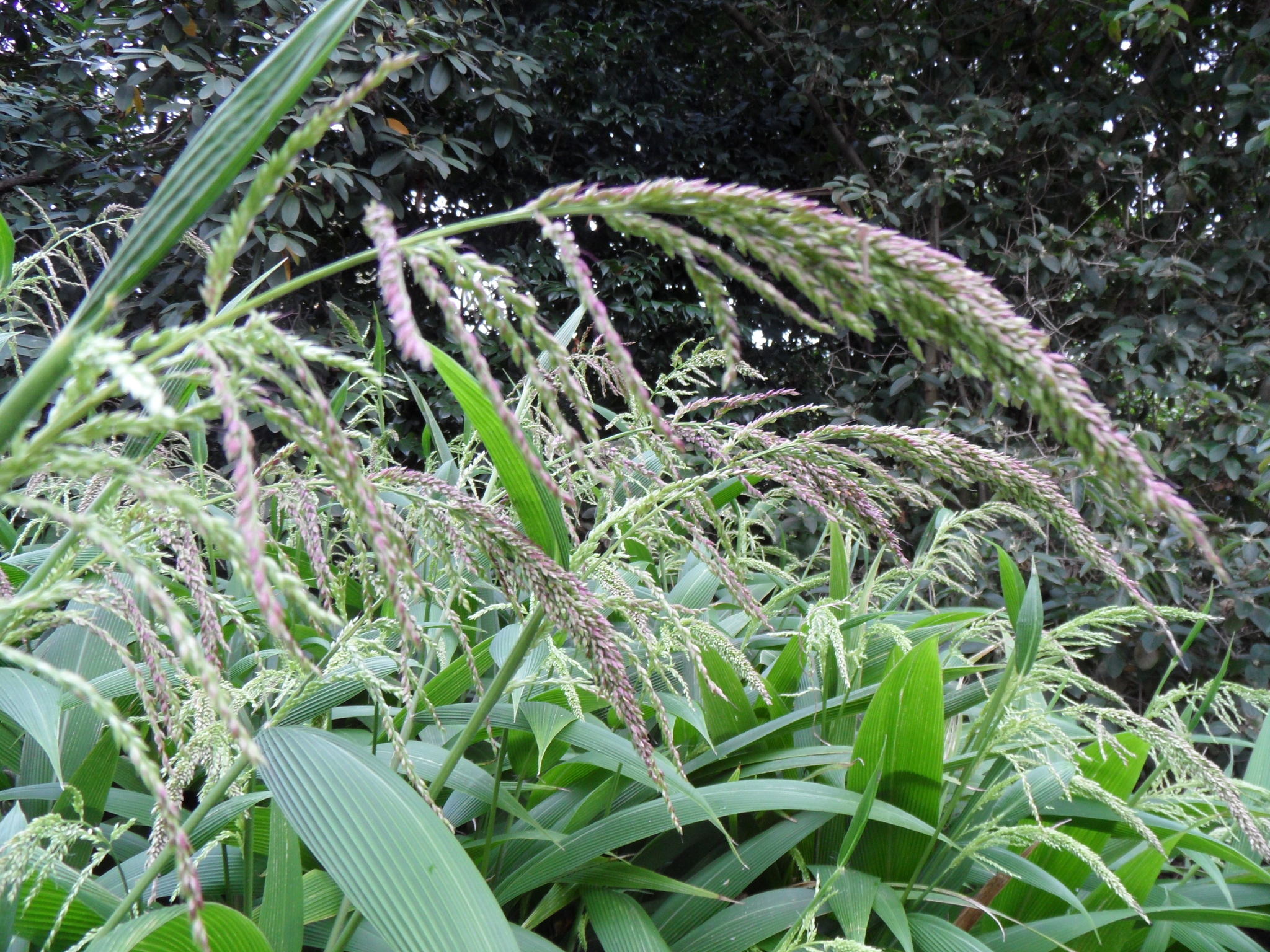
Latin seta – bristle, as each spikelet has a stiff, often conspicuous and coloured bristle.
Variable annuals or perennial grass. Leaf blade narrow to broad, rolled in bud. Ligule membranous or a fringe of hairs. Inflorescence a mostly cylindrical, spike-like bristly panicle. Spikelets with 2 florets and bristles that persist below each spikelet after the spikelet has been shed. Glumes unequal. Lower floret male or sterile and as long as the spikelet, lower glume 3-6 nerved, upper glume 3-9 nerved. Lemmas firmer than glumes, awnless, hairless, 1-5 nerved. Palea 2-nerved.
Generally grown ornamentally for the unusual foliage and interesting purplish colouring of the spikelet bristles.
A number of exotic species are naturalised and S. gracilis Kunth var. pauciseta (Desf.) B.K. Simon is a weed of gardens, lawns and waysides. Some species may act as hosts to maize and sugarcane mosaic virus; others, such as S. adhaerens, S. barbata and S. faberi are considered significant weed species.
The Australian endemic genus Paspalidium is sometimes placed in this genus.
Annuals by seed, perennials by division.
Occasionally used as a cereal and source of forage, fodder and silage. Overseas S. verticillata is the millet sold as bird seed while S. italica is used for the same purpose in Australia and as a cereal in Asia. The young shoots of S. palmifolia are edible. The flower heads are sometimes dried and used for decoration.
Inflorescences dense, cylindrical, with bristles persisting after the spikelets are shed.
About 150 species from tropical and warm climates. Australia has 16 species, 7 of which are native.
Source: (2005). Poaceae. In: . Horticultural Flora of South-eastern Australia. Volume 5. Flowering plants. Monocotyledons. The identification of garden and cultivated plants. University of New South Wales Press.
